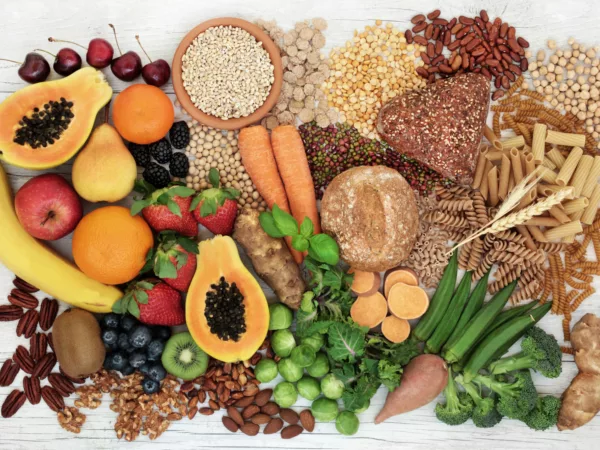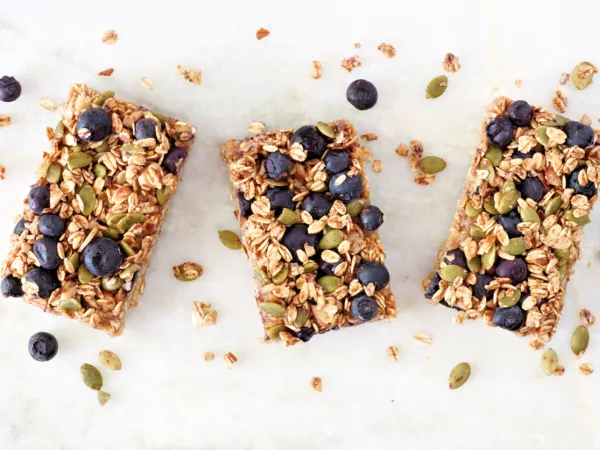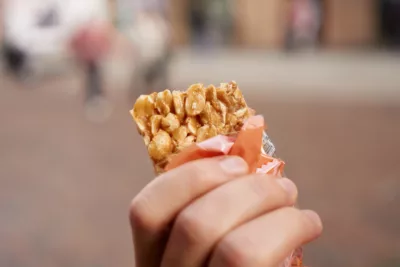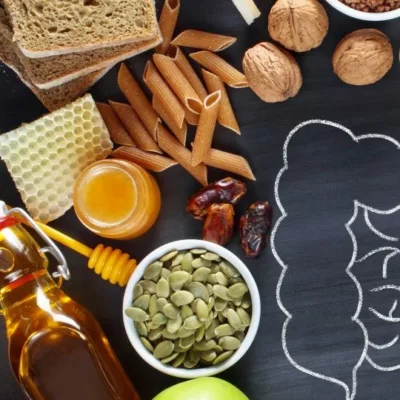Written by Michael Evans, Mahshid Farahani and Lauren Robinson.
High protein claims in snack bars have steadily increased over the last 10 years, with almost 1/3 of launches claiming to have high protein content in 2023.
However, these claims are starting to plateau after years of being on the rise. Market data shows that high protein snack bars have saturated the market, making it difficult for brands to differentiate themselves on a high protein benefit. With this in mind, savvy snack bar brands need to look ahead and consider what the next evolution of the nutritious snack bar might look like. In this article, we take a look at what the next big trend in fortified snack bars might be, and get some practical suggestions from our Technical Manager and Innovation Manager.
What Drives Consumers to Purchase Snack Bars?
Historically, consumers have used snack bars as a snack between meals, an energy boost while exercising or even to supplement a light meal. Currently, the top reasons for trialling a new snack bar include:
- energy support (42%)
- gut health (37%)
- weight loss support (33%)
Consumers are looking for functional energy in their snack bars, but they are also suspicious of many ‘energy’ claims because they associate this with products that use excess sugar or have ‘empty calories’.
To succeed, snack bars need to prove to consumers that they can provide energy without using excess sugar. As well as this, new launches should be careful of using ‘low sugar’ claims, since research has shown that this claim can have negative taste connotations.
*Mintel, 2022, US consumer data - 'Motivation for trial, snack bars.'

Can Fibre Be the New Protein?
Based on our research, we believe that high-fibre or added-fibre snack bars may be poised for success. Mintel GNPD data shows that the percentage of snack bars claiming high/added protein content has dropped slightly since their peak in 2019, whereas added fibre claims have been slowly rising. (Mintel GNPD, snack bar claims 2019-2024, ANZ, North America, UK, Japan, South Korea)
High-fibre ingredients can help to communicate ‘sustained energy’ to consumers, given that they result in an increased intake of slow-burn carbohydrates, creating a sustained energy release. However, the average consumer may still need some help in understanding this mechanism. High-fibre ingredients are also known to benefit gut health, another key purchase driver for snack bars.
Fibre is an important nutrient to focus on given that across ANZ and around the world many people do not eat nearly enough fibre. In Australia, a whopping 72% of adults aren’t eating enough fibre. Dietary fibre is important for our digestive health and regular bowel movements. Fibre also helps you feel fuller for longer, can help improve cholesterol and blood sugar levels and can assist in preventing some diseases such as diabetes, heart disease and bowel cancer.
According to the National Health and Medical Research Council of the Australian Government, the recommended adequate intake (AI) and the suggested dietary target (SDT) of dietary fibre daily to reduce chronic disease risk for adults is as follows:
Adequate Intake |
Suggested Dietary Target |
|
Women |
25g |
28g |
Men |
30g |
38g |
Children |
Children as young as 4 should consume 18g of fibre, with this increasing with their age. |
|
The CSIRO reports however that on average Australian women consume only 21g of fibre and Australian men consume around 25g of fibre per day – well below the minimum NHMRC recommended adequate intake.

One reason for this underconsumption of fibre is that there is a perception that high-fibre products are tasteless, have a bad texture and can cause gut discomfort. Lifestyle is another factor. With many consumers being time-poor and eating processed foods on the go, the recommended daily intake of fruits and vegetables is often not met. Another potential reason for low fibre intake may be the increasing uptake of specialised low-carb, high-protein, high-fat diets. These types of diets reduce the amounts of carb-rich foods consumed, which are typically a good source of soluble and insoluble fibres and resistant starches. The flip side is that sometimes keto or low-sugar snacks are formulated with certain types of fibre to replace sugar, leading to high-fibre content.
Foods naturally high in fibre include:
- wholemeal pasta
- carrots
- kidney beans
- corn
- oats
- broccoli
- lentils
- almonds
- dried apricots and more.
Fibre-enriched snack bars can help consumers bridge the gap between the amount of dietary fibre they should consume and the amount they currently consume, while also communicating how this helps consumers stay fuller for longer and enjoy more sustained energy.
Several different types of fibre could be used for fortification:
- cellulose and lignins
- β-glucans
- inulin
- acacia gum
- resistant dextrin
Read on for some tips from our Technical Manager on what you need to consider when fortifying products with fibre.
Technical Considerations
To create a great fibre-fortified snack bar, there are many technical considerations that need to be taken into account when formulating your recipe.
Some key challenges that you will face include:
- Achieving the right texture and mouthfeel – it is important to get the fibre combination and dosage balanced otherwise the product's texture can be too hard, soft or even powdery.
- Taste and flavour – some fibres can introduce unpleasant flavours and bitterness which might be off-putting for customers.
- Shelf life and water activity - fibres can affect the water activity of snack bars which can impact their stability and texture over shelf life.
- Processing – it’s important to devise a scalable method for fibre addition that evenly distributes the ingredient without using too much liquid while avoiding a powdery mouthfeel.
- Digestive tolerance - high levels of certain fibres such as polyols and inulin can sometimes cause gastrointestinal discomfort, such as bloating, gas and/or laxative effects.
Sugar is also important in this space. Consumers of functional snack bars are likely to be wary of high-sugar products, but they may also recognise the impact that some sweeteners can have on gut health. Manufacturers will need to strike a balance between creating a tasty product and ensuring that the snack bar isn’t perceived as either ‘too sugary’ or ‘using unhealthy artificial sweeteners’.

Making a nutritional content claim about dietary fibre generally requires a large amount of fibre to be added to the base recipe, and balancing this input can be challenging. Manufacturers will also need to make decisions about whether to use soluble or insoluble fibre when developing a product. The choice of fibre to use can depend on the claims, functionality, and texture desired for the end product.
It is important for manufacturers to understand the FSANZ regulations around making nutrition content claims. Schedule 4 of the FSANZ Code provides guidance on the conditions set for nutrient content claims. Generally speaking, a nutrition content claim for ‘dietary fibre’ presence may be made if there is at least 2g of dietary fibre provided per serve of food. A ‘good source of dietary fibre’ statement may be made if there is at least 4g of ‘dietary fibre’ provided per serve of food and an ‘excellent source of dietary fibre’ statement may be made if there is at least 7g of dietary fibre provided per serve of food. To ensure compliance with the FSANZ Code it is always advisable to get support from a regulatory consultant if uncertainties exist.
How We Can Help
At Hawkins Watts, we have an ever-expanding range of health and nutrition ingredients available, including a range of soluble and insoluble fibre sources and a selection of prebiotic fibres. We also have an excellent range of texture, flavour and colour ingredients, making us a one-stop-shop for all your specialised ingredient needs.
With a team of highly qualified food technologists and state-of-the-art labs in our Melbourne office, we can work together with you to find the best solutions for your functional food projects.
Please reach out to our expert, Amanda Thomas, if you have any queries.
Sources
- What's next in snack bars after 'added protein' - Mintel
- Fibre.pdf (nutritionaustralia.org)
- Fibres for your gut: sorting through the roughage | Dietitians Australia
- High-fibre foods and diet | healthdirect
- Dietary Fibre Intake in Australia. Paper I: Associations with Demographic, Socio-Economic, and Anthropometric Factors - PMC (nih.gov)
- CSIRO: https://blog.totalwellbeingdiet.com/au/2020/how-much-fibre-should-i-eat/




